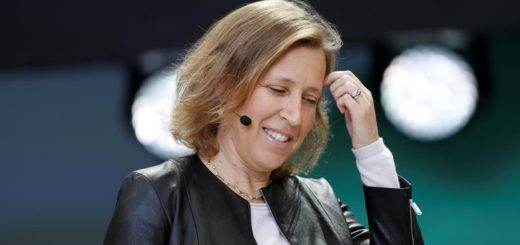CBN MPC Takes Fresh Decisions Amid Old Naira Notes Deadline Saga
The Central Bank of Nigeria (CBN) revealed on Wednesday that some fresh decisions were taken at its Monetary Policy Committee (MPC) meeting held on Monday and Tuesday.
The outcome of the MPC meeting was made available to the public domain in a document signed by the CBN Governor, Godwin Emefiele,
The meeting came amidst controversies surrounding the recent Naira redesign and cash withdrawal limit policies by the apex bank.
Also, the deadline on the validity of the old naira notes is causing outrage among citizens as many lament the availability of the new Naira notes at banking halls and Automated Teller Machine (ATMs) points.
Nothwithstanding, some of the crucial deliberations at the just concluded CBN MPC meeting include; raising the Monetary Policy Rate (MPR) by 100 basis points to 17.5 per cent; retaining the asymmetric corridor of +100/-700 basis points around the MPR; retaining the CRR at 32.5 per cent; and retaining the Liquidity Ratio at 30 per cent.
The subject matters were arrived at following votes by members of the committee.
Read below the full text from the CBN MPC meeting:
“The Monetary Policy Committee (MPC) held its first meeting for 2023 on the 23rd and 24th January, 2023, as optimism of a rebound in global output recovery waned considerably, giving room for increased concerns of a likely global recession in 2023.
“This is driven by several global shocks impacting negatively on growth and price development. Major headwinds to global growth include: ongoing geopolitical tensions in some regions; intensified disruptions to the energy market; persisting supply bottlenecks; resurgence of the COVID-19 pandemic in major industrial cities in China; and tightening external financial conditions. In addition to these, the slow growth in global trade, continued volatility in the oil market and growing private and public debt portfolios, are clear signals of increasing uncertainty, imposing a drag on growth.
“In the domestic economy, output growth recovery was subdued in the third quarter of 2022, but expected to recover moderately in the fourth quarter on the back of continued support of both monetary and fiscal policy through various interventions in growth-enhancing sectors. At this meeting, the Committee reviewed these and other developments in the global and domestic economic and financial environments in 2022, as well as the outlook and risks for 2023.
“Twelve (12) members of the Committee attended this meeting.”
Global Economic Developments
Naija News understands that the apex bank MPC members expressed concerns over the growing evidence of increased militarization of the war in Ukraine and the consequence of a prolonged war on the recovery of the global economy.
It also expressed concern about the possibility of fighting another pandemic that may again affect the global economy in 2023.
It said: “These two factors alongside the tightening of global financial conditions remain major headwinds to global economic growth. The combined impact of these shocks on the global economy could result in further disruptions to commodity and energy markets as well as the efficient functioning of global supply chains.
“In the Advanced Economies, fiscal policy retreated to give way to monetary adjustment, while in the Emerging Markets and Developing Economies, fiscal capacity is being greatly undermined by the array of shock spillovers from the global economy. The International Monetary Fund (IMF), in its October 2022 World Economic Outlook, retained its global output growth projection for 2022 at 3.2 per cent, but further downgraded in the 2023 forecast to 2.7 per cent compared with 2.9 per cent in its July 2022 forecast. The World Bank in its latest forecast, indicated a much lower global growth expectation of 1.7 per cent for 2023.
“On price development, the MPC observed that inflation, in most Advanced Economies, although trending downwards, remained significantly above their long-run objectives and is expected to remain elevated throughout 2023.
“This is driven by the continued high price of food and energy, a fallout of the war in Ukraine, lagged impact of the massive liquidity support rolled out to douse the impact of the COVID-19 pandemic, and persisting disruptions to the global supply chain as China faces a renewed surge of the Pandemic. Fears that Russia may renege on its commitment to the Black Sea grains deal is also building expectations of possible rise in short-term price levels. In the Emerging Markets and Developing Economies, inflation is expected to moderate marginally in 2023, but remain broadly elevated due to a combination of factors such as the persisting high price of grains and other commodities; continued exchange rate pressures; and other legacy structural factors.”
The apex bank noted that in the global financial markets, the continued normalisation of monetary policy has led to the tightening of external financial conditions and increased volatility n the equities market. With the increased fears of a likely global recession in 2023, investors have begun moving towards safe-haven assets such as gold and silver to safeguard their investments.
“In the Advanced Economies, corporate debt levels remain considerably high as pressure builds to avoid default scenarios with the continued hike of monetary policy rates. In the Emerging Market and Developing Economies, the
persistence of rising public debt profiles and capital flow reversals are putting severe pressure on exchange rates, posing a challenge to external sustainability,” the CBN MPC noted.
Domestic Economic Developments
According to the bank, available data from the National Bureau of Statistics (NBS) revealed that Real Gross Domestic Product (GDP) grew by 2.25 per cent (year-on-year) in the third quarter of 2022, compared with 3.54 per cent in the second quarter of 2022 and 4.03 per cent in the corresponding period of 2021. The economy has continued on a path of positive growth for eight consecutive quarters. This is driven largely by support by the Bank and the fiscal authority to growth-enhancing sectors.
It stressed that staff projections showed that output growth recovery is expected to continue reasonably in 2023, given the expected sustained positive performance during the fourth quarter of 2022 and a steady rebound in economic activities.
The communique reads further: “The MPC welcomed the moderation in inflation following ten consecutive months of uptick, as headline inflation (year-on-year) declined marginally to 21.34 per cent in December 2022 from 21.47 per cent in November 2022. Month-on-month headline inflation, however, increased to 1.71 per cent in December 2022 from 1.39 per cent in the preceding month due to a rise in consumer spending during the festive period.
“The Committee observed the continued growth in money supply with broad money (M3) growth exceeding the 2022 provisional benchmark of 15.21 per cent at 16.52 per cent (year-to-date) in December 2022, compared with 13.92 per cent in November 2022. This was largely driven by increased claims on other sectors (other financial corporations, state and local governments, public non-financial corporations, and the private sector).
“Money market rates oscillated below and within the asymmetric corridor of th standing facilities window, reflecting changing liquidity conditions in the banking system. Accordingly, the monthly weighted average Open Buyback (OBB) the rate decreased to 11.61 per cent in December 2022 from 12.56 per cent in November 2022, while the monthly average inter-bank rate increased to 12.08 per cent in December 2022 from 11.89 per cent in November 2022.
“The MPC noted the continued resilience of the banking system, evidenced by the progressive improvement in the Non-Performing Loans (NPLs) ratio from 4.9 per cent in November 2022 to 4.2 per cent in December 2022. The Committee also noted that the liquidity ratio was well above its prudential limit at 44.1 per cent, while the Capital Adequacy Ratio (CAR) remained at 13.8 per cent in December 2022 compared with the preceding month, staying within its prudential range of 10.0 -15.0 per cent.
“The equities market was bullish in the review period, as the All-Share Index (ASI) and Market Capitalization (MC) increased to 51,251.06 and N27.92 trillion on December 30, 2022, from 43,839.08 and N23.88 trillion respectively, on October 31, 2022. This reflected better-than-expected corporate earnings and improved investor confidence in the country.
“The Committee noted the marginal decline in the external reserves, as gross external reserves decreased by 0.95 per cent at end-December 2022 to US$36.55 billion, from US$36.9 billion at end-November 2022. This reflects the exchange rate pressure accentuated by a combination of heightened demand and slow accretion to reserves.
“The Committee reviewed the performance of the Bank’s various interventions aimed at stimulating production and productivity across the real sector.
“Between September and October 2022, under the Anchor Borrowers Programme (ABP), the Bank disbursed N41.02 billion to several agricultural projects, bringing the cumulative disbursements under the Programme to ₦1,067.29 billion to over 4.6 million smallholder farmers cultivating or rearing 21 commodities across the country. The Bank also released N300 million to finance large-scale agricultural projects under the Commercial Agriculture Credit
Scheme (CACS), bringing the total disbursements under the Scheme to ₦745.31 billion for 680 projects in agro-production and agro-processing.”
The apex bank also claimed that it released the sum of ₦48.30 billion under the ₦1.0 trillion Real Sector Facility to seven (7) new real sector projects in agriculture, manufacturing, and services.
It said: “Cumulative disbursements under the Real Sector Facility currently stood at ₦2.15 trillion disbursed to 437 projects across the country, comprising 240 in manufacturing, 91 in agriculture, 93 in services and 13 mining sector projects. Furthermore, under the 100 for 100 Policy on Production and Productivity (PPP), the Bank has disbursed the sum of ₦20.78 billion to nine (9) projects in healthcare, manufacturing, and services.
“This brings the cumulative disbursements under the facility to ₦114.17 billion to 71 projects across healthcare, manufacturing, services and agriculture. The Bank released ₦4.00 billion under the Intervention Facility for the National Gas Expansion Programme (IFNGEP) to promote the adoption of compressed natural gas (CNG) as the preferred fuel for transportation and liquefied petroleum gas (LPG) as the preferred cooking fuel.
“In the MSME sector, the Bank supported entrepreneurship development with the disbursement of the sums of N1.33 billion and N10.00 million under the Agribusiness/Small and Medium Enterprise Investment Scheme (AgSMEIS) and Micro, Small, and Medium Enterprise Development Fund (MSMEDF), respectively, to support entrepreneurship development in the country, bringing the total disbursement under the interventions to N150.22 billion and N96.08 billion, respectively. Under the Export Facilitation Initiative (EFI), the Bank funded export-oriented projects with the sum of N5.34 billion, bringing the cumulative disbursement under the intervention to N44.58 billion.”
The bank expressed further concern on the broad outlook for the recovery of both the global and domestic economies which, according to them, remains uncertain, with the path to full recovery clouded by significant downside risks.
The key risks according to the CBN MPC, remain the lingering headwinds from the Russian-Ukraine war, heightened inflationary pressure across several economies and the sharp slowdown of economic activities in China with the resurgence of the COVID-19 pandemic across its major cities.
Others it said include: the tightening of external financial conditions as monetary policy normalization, continues; the increasing risk of a global debt crisis as both corporate and public debt levels burgeon; and the increasing likelihood of a global recession in 2023.
“Available data and forecasts for key macroeconomic indicators for Nigeria suggest that the economy will continue to grow through 2023, but at a subdued pace. The continued high level of insecurity; perennial scarcity of Premium
Motor Spirit (PMS) and high cost of other energy sources; increased spending towards the 2023 general elections; rising cost of debt servicing; and deteriorating fiscal balances remain the key sources of shocks to the Nigerian economy. Accordingly, the economy is forecast to grow in 2023 by 2.88 per cent by the CBN estimate,” the statement added.
Considerations:
After hours of deliberations, the MPC expressed delight that inflation (year-on-year) had started to moderate, it was, however, not convinced that a marginal 13 basis points dip in inflation was enough to begin to celebrate.
The Committee was, therefore, against the opinion that a hold or loosen option was desirable. This is because loosening under a double-digit inflationary condition will be tantamount to an immediate reversal of the expected further downward trend in inflation. Committee also felt that loosening would negate the objective of dampening the pent-up aggregate demand that fueled the rise in inflation post-COVID-19 pandemic.
As for hold, the Committee was reluctant to consider this option because a hold option would signal MPC’s quick adjustment of its policy stance due to a one-time, marginal decline in inflation, suggesting weak confidence in its previous policy stance at taming inflation.
The statement added: “The MPC was therefore unanimous in its position to continue to tighten. However, the dilemma at this meeting was whether to continue tightening aggressively or moderately. To the Committee, a moderate tightening may slow the rate of deceleration in inflation without necessarily hurting output. For those members who felt that an aggressive stance was needed, they were of the view that Nigeria’s inflation at a rate above 20 per cent, was already a threat to growth and among the highest in the world. To this group of members, aggressively raising the policy rate was paramount to reining in inflation because an aggressive tightening stance would further narrow the negative real interest rate margin. MPC also feels that a tightening stance would signal confidence in the effectiveness of its Monetary Policy direction to rein in inflation, improve financial system stability, and moderate exchange rate.
“The Committee’s Decision Members welcomed the recent deceleration in year-on-year headline inflation, noting that the persistence in policy rate hikes over the last few meetings of the Committee had started to yield the expected decline in inflation.
“The Committee thus deliberated on either to hike rates further or hold for the impact of the last four rate hikes to continue to feed through. At this MPC, therefore, the options considered were primarily to hold the policy rate or tighten further to consolidate the gains of previous rate hikes. Loosening, in the view of members, would gravely undermine the gains of the last four rate hikes.
“The MPC noted the continued upward risk to price development characterized by the forthcoming 2023 general elections; perennial scarcity of PMS; continued rise in other energy prices; exchange rate pressure; as well as rising insecurity.
“Members, however, noted that the current naira redesign and cash withdrawal limit policies are huge moderating factors to price development as Currency Outside-Banks is expected to continue to moderate beyond the implementation stage of these policies.
“The MPC was of the view that although the inflation rate moderated marginally in December, the economy remained confronted with the risk of high inflation with adverse consequences on the general standard of living. The Committee, therefore, decided to sustain the current stance of policy at this point in time to further rein in inflation.”













